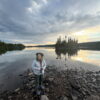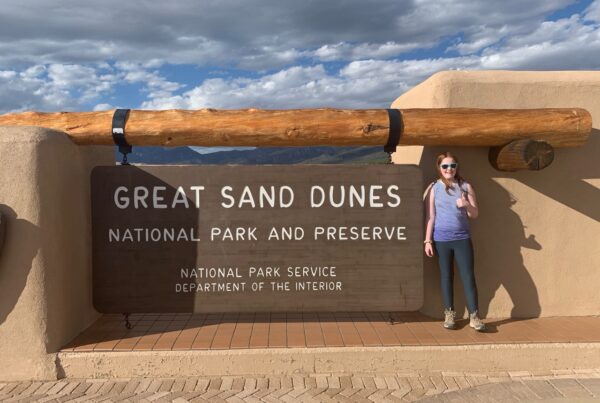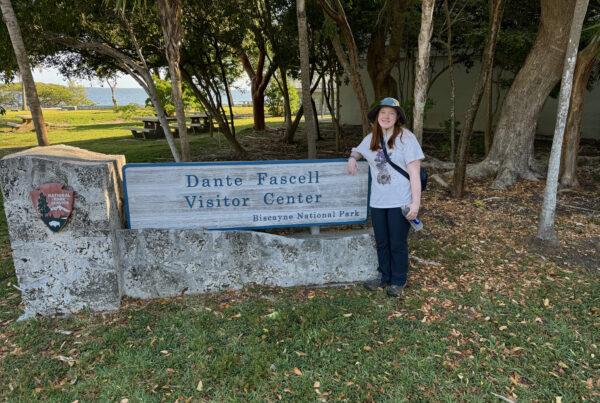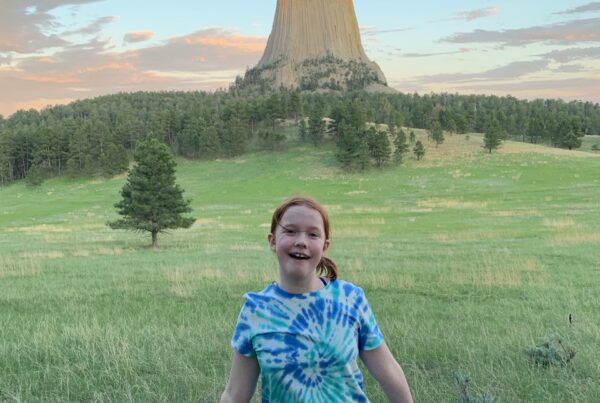While the National Park Service was originally founded to preserve historically significant locations and great tracts of land they have also played an important role in the recovery of many endangered species. While many of these animals may still be at risk the efforts of the NPS have made it possible for these animals to step back from the brink of extinction.

The Black-Footed Ferret can be found in Badlands National Park and Wind Caves National Park both located in South Dakota and is considered one of the most endangered species in North America. My daughter saw one running across the road while we were in the Badlands while we were driving to our sunrise location. In 1980 the species was thought to be completely extinct. It wasn’t until Shep, a Wyoming farm dog, killed a ferret and brought it home. After some inquiry a small colony was discovered on the farm, 18 of these ferrets were taken into captivity and would become the basis for captive breeding with hopes of reintroduction to the wild.
Today there are just over 120 black-footed ferrets living in Badlands National Park which is the only self sustaining population currently in the wild, there are an additional 60 ferrets living at Wind Cave National Park. They are monitored throughout the year by biologists who also keep an eye on the local prairie dog population. Prairie dogs make up to 90% of the black-footed ferrets’ diet, so when the prairie dogs began to decline due to the Sylvatic Plague this also infected the black-footed ferret population. It is estimated that the population will need to reach 3,000 to be considered fully recovered. Captive breeding and release programs are ongoing across many areas of the United States and Canada and it is hoped that one day the black-footed ferret could be removed from the endangered species list.
The Kemp’s-ridley sea turtle is the most endangered sea turtle in the world. In the 1940’s it was reported that nests in the Gulf of Mexico area numbered more than 40,000. By 1985 documented nests totaled fewer than 1,000. The turtle’s primary nesting location at the time was in Rancho Nuevo, Mexico. The problem was that even in the 40’s it was estimated that 90% of those 40,000 nests were destroyed the same day they were laid by local people digging up the eggs and even taking the nesting mother turtles. It wasn’t until 1966 that Mexican government stepped in making laws and posting guards to protect the Kemp’s-ridley turtle nesting site.

There was growing concern that there was only one protected nesting location for the Kemp’s-ridley sea turtle and that was when the US and Mexican government came to an agreement to expand the efforts at rebuilding the species. In 1978 a second nesting site was established on Padre Island National Seashore, a previous nesting site of the turtle. Between 1978-1988 portions of each nest laid at Rancho Nuevo were relocated to the Padre Island National Seashore in Texas in an effort to reestablish the old nesting site. It was believed that the baby turtles would imprint on the beach where they hatched. When they hatched they were recaptured and entered a “headstarting” program where they would spend the first 9-11 months of their lives getting bigger and stronger, and being tagged with a number before finally being released. All they could do then was wait and see if those babies would one day return to the Padre Islands to lay eggs of their own. Finally in 1996, 18 years after the first eggs had been relocated the tagged females from the first round of the catch and release returned to the Padre Islands to lay their eggs. The Kemp’s-ridley sea turtle is still on the endangered list but with the help of the NPS it stands a great chance of making a comeback
It is through the incredible efforts of the National Park service along with many other organizations that these species have not become extinct already. Their hard work has helped the existing populations endure and once again start to flourish. If you want to help you can donate to your favorite park directly or to the National Park Foundation to help support their efforts all over the country.







